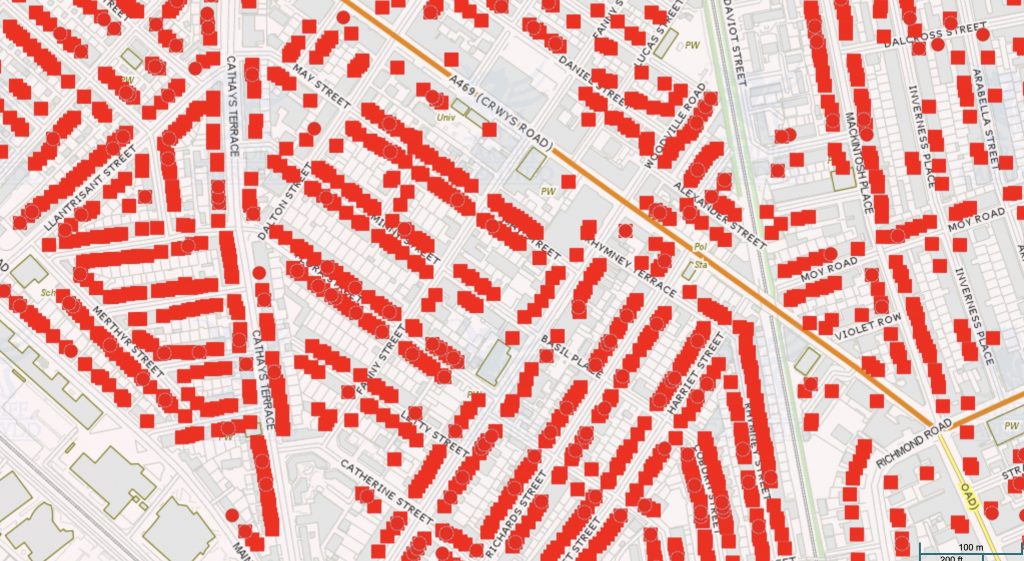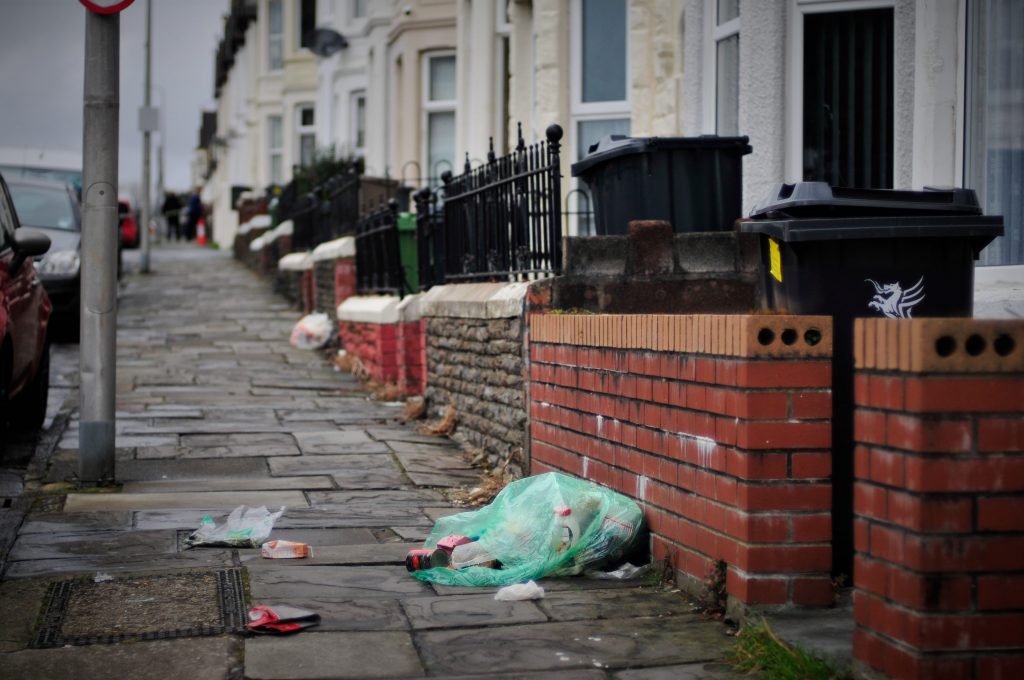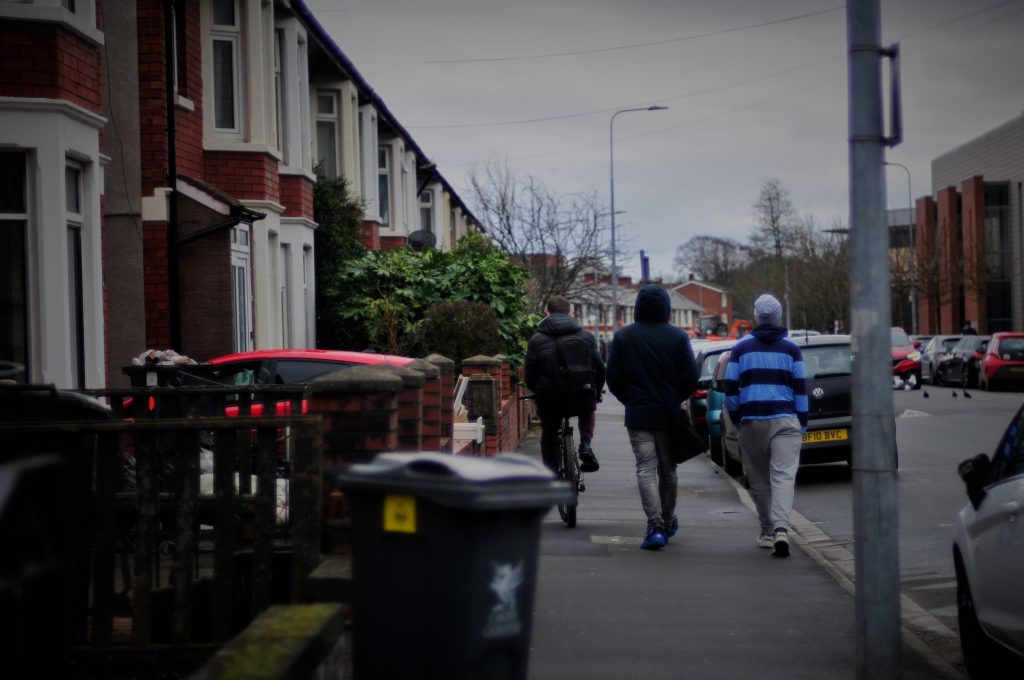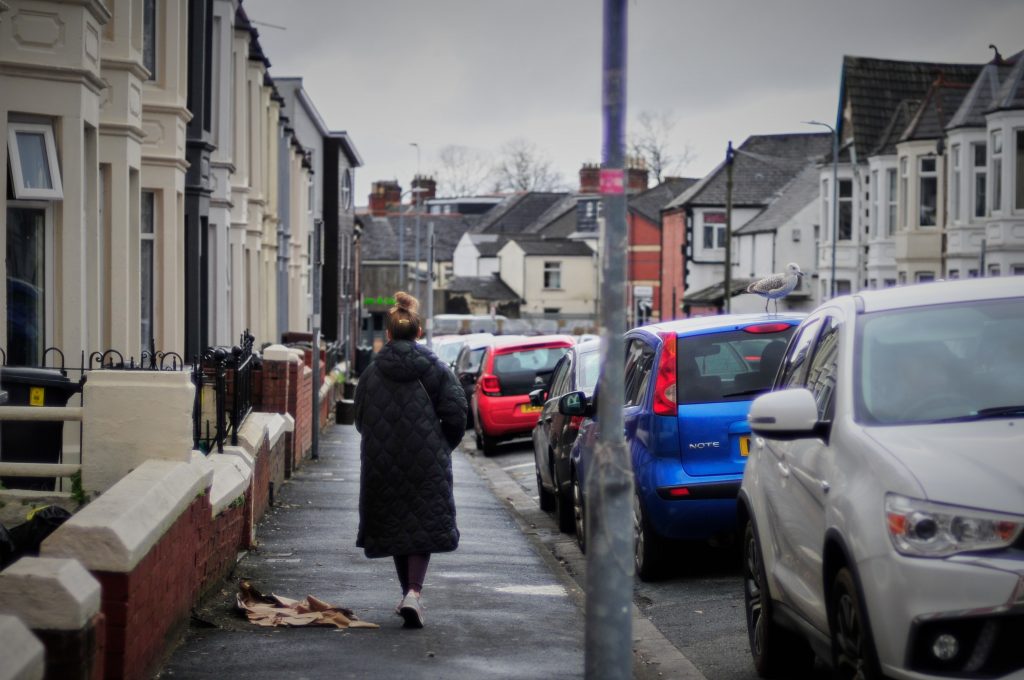The area is home to almost 70% of Cardiff’s shared housing
WHEN I sit down in Bob’s living room, he hands me a can of Diet Coke and a stapled bundle of over 100 pieces of paper.
“I printed these emails out before you got here,” he says, “I just thought they might be useful.”
Before I can take a closer look, he beckons me over to look at a map he’s pulled up on his computer screen. Despite being mostly obscured by a sea of red dots, I can just about make out that I’m looking at a map of Cathays.

“Each one of those red dots is a shared house,” says Bob with a sigh, and then adds: “It never used to be like this.”
Robert David, 76, has lived on Maindy Road for 48 years and is one of many long-term residents I spoke to about life in Cathays, the area home to Cardiff’s biggest student population and highest density of houses in multiple occupation (HMOs).
There’s no sense of community anymore.
There’s nobody left.”
Shortly after I begin talking with Mr David, his neighbour lets herself in and sits on the sofa opposite me. Linda Barry, 73, tells me that she has been living in the house next door for 52 years.
She says: “Cathays used to be a great place to live, it was full of families and we all knew each other – but there’s no sense of community anymore. There’s nobody left.”
Together, Mr David and Ms Barry tell me about their experiences of living in the student hub of Cathays. Parking problems, litter, noise and harassment are just some of the issues they describe, and ones which are a common theme in all of my conversations to come.
As they speak, if I’m not taking notes, I’m flicking through the mass of printed emails that Mr David has given me. Most of them are back and forth responses between him and Cardiff Council regarding the number of HMOs and what is, in his words, the: “sad decline of Cathays”.
While I read, Mr David says: “I really do not have any issues with students in general, they just want to have a good time, but I do have with the council for what they’ve allowed to happen in the area.
“Every summer you just have to wait, worrying about what students you are going to get moving in next door, and whether you will be able to sleep in the year to come.”

In 2016, Cardiff Council published data showing that 77% of people in Cathays are aged between 15 and 29, whereas the citywide average is 28%. Out of the 2,189 HMOs currently listed on Cardiff’s public HMO register, 68% of them are in Cathays.
A spokesperson for Cardiff Council said: “The council is fully aware of the issues relating to HMOs in areas of the city and has actively taken measures to deal with these issues for the last 12 years.
“The council is now going further, working with South Wales Police and the universities, to reduce the impact of HMOs on residential areas and to tackle issues such as waste presentation, litter, parking and anti-social behaviour.”
Nic Hawkins, 62, who lives on Tewkesbury Street, tells me: “I’ve had abuse, I’ve had threats, I’ve had one group of students appear on my doorstep with baseball bats.
“A lot of people living in other areas would be shocked and wouldn’t tolerate the amount of noise, nuisance and abuse we get on a regular basis.”
In recent years, parking has also been a big problem for Mr Hawkins.
He says: “There’s been a few times when my wife comes home in the evening and phones me up in tears because she hasn’t got anywhere to park, and she doesn’t want to walk home from the cemetery by herself in the dark.
“It just makes me sad that this is what our lives have become.”

Cards celebrating the golden wedding anniversary of Frank Spragg, 73, and Gloria Spragg, 69, line the fireplace of their house on Rhymney Street, Cathays. They tell me they moved here 50 years ago, just after getting married.
“I’ve wanted to move away for years now,” says Mrs Spragg, “but he won’t sell this house because he’s afraid it will become an HMO.”
Mr Spragg then explains that, although they’ve had problems with parking, litter and constantly being woken up in the night by loud groups on the street – he doesn’t feel he can leave.
“All the old neighbours used to look after each other,” he says, “we have an elderly neighbour close by and we can’t leave her behind.
“We’ve been doing the shopping for her for some time because she used to look after other people on the street. We can’t just leave her and let this house be sold and converted into an HMO.”
For my own good, it’s better that I just go.”
Someone who is now thinking of selling his Cathays home is Michael Fear, 65, who lives on Malefant Street in the house he grew up in.
While I wait for him to answer the door, I notice the security camera he has pointed out towards the street. After he greets me, I am then led though the dusty downstairs of the house, the entirety of which has been ripped out and is clearly in the middle of renovations.
“Is there any point me finishing it now?” he will later ask me. “I have money to do up the property but I’m thinking, do I really want to live here now?”
Mr Fear tells me of the abuse, harassment and noise he has received from students over the years. He says that he regularly has young people kicking his door late at night, throwing cones at his window or damaging his work van outside – hence the security camera.
He says: “The area has been ruined and unfortunately there is no way you can save it now.
“You can’t really blame the students or the landlords, my issue is with the people who grant them permission for HMOs.
“For my own safety I probably have got to move. For my own good, it’s better that I just go.”
A public consultation on whether to extend Cathays as an Additional Licensing Area is currently underway which looks to tackle issues such as waste, anti-social behaviour, energy efficiency and property security.
Cardiff Council said: “The additional licensing scheme that is currently being consulted on in Cathays has been in place since 2010 and ensures that the Council has up-to-date records of the number of HMOs, and that standards of HMO rental accommodation in these areas are of a certain standard.
“When this statutory consultation ends on March 22, a decision will be taken by the cabinet on whether the scheme is extended for a further five years. This licensing scheme is not a statutory requirement but was brought in by the council to improve living standards in these properties.”

“My whole life has been in Cathays and yet I cannot wait to go.”
Avril Moore, 68, lives on Brithdir Street in Cathays and says she will be moving out soon.
She says: “I’ve lived here all my life. I was brought up in May Street and my husband was brought up just over the other side of Crwys Road on Daniel Street.
“Cathays has been our whole world but now we are desperate to move. Absolutely desperate, we can’t stand it another year.
“This used to be a place where people would come out on the street and wave you off when you got into your taxi to go on holiday. Now, we barely know anyone.
“I’ve got a 30-year-old apple tree in my garden that was planted when my daughter was born, and it’s going to break my heart to have to leave it behind.
“It’s just really sad that at our time of life, when we should be retiring, sitting back and taking things easy, that we have to go through the stress of moving, having to get rid of stuff I would’ve wanted to hang onto – and leave my garden which I love.
“My whole life has been in Cathays and yet I cannot wait to go.”
Cardiff Council said: “Supplementary Planning Guidance has been in place since October 2016. This sets out how the council will assess applications for HMOs and seeks to restrict the amount of additional HMOs in any given area of the city to protect the amenity or character of an area.
“In Cathays and Plasnewydd, for example, a threshold is applied which seeks to resist new changes of use that would result in more than 20% of dwellings within a 50m radius of the property being an HMO. In other areas of the city the figure is 10%.
“Despite this planning guidance, recent decisions by the Planning Inspectorate have overturned decisions of our planning committee and allowed HMOs in areas of Cathays where the concentration of HMOs is exceptionally high already.
“As part of the current review of Cardiff’s Local Development Plan (LDP) officers and Members of the Council are working with colleagues in Welsh Government to establish a strengthened policy framework to provide greater controls over these areas.”



